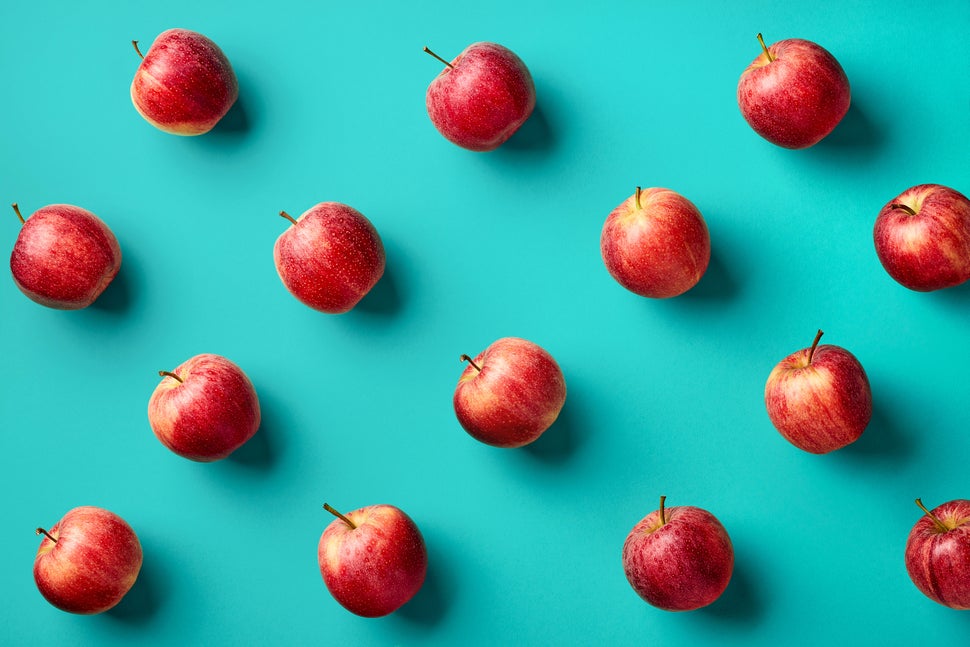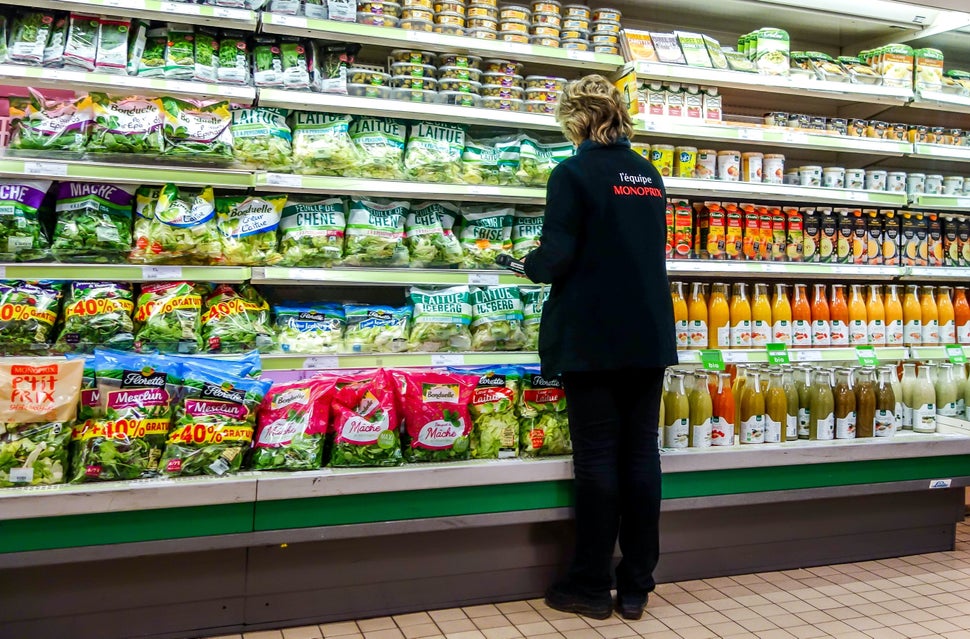
Buying and eating apples seems a pretty healthy thing to do. But a new study has found that every 1 kilo (2.2 pounds) of conventionally grown apples creates health effects costing 21 cents due to the effects of pesticides and fungicides, resulting in sick leave and eventually shorter life expectancies.
The study, from the Dutch organization Soil & More Impacts, to be published at the end of May, highlights a key problem: The price you pay for apples in the store doesn’t cover the hidden costs of producing them. Instead, these are paid for by society — through the ever-increasing costs of health care and health insurance.
The apple example is not an outlier; it’s indicative of the bigger picture. Agriculture is the world’s largest industry, with 1 billion people engaged in farming worldwide. Pasture and cropland use about 50 percent of the earth’s habitable land. Agriculture also is one of the worst-polluting industries on the planet — even though it could be one of the most powerful forces for good.
It’s easy for people to distance themselves from the problem. Most people aren’t farmers and don’t think about these issues daily. But it’s the food choices we make every day that feed into our farming practices.
Conventional farming practices focus on monocultures, genetically modified organism (GMO) seed use and pesticides, polluting both crops and groundwater, as well as conventional plowing methods that result in topsoil erosion. Regenerative farming practices use no pesticides and non-GMO seeds and focus on ecosystem diversity, crop rotation, composting and no-till cultivation (growing crops without disrupting the soil).

Data from a 2014 white paper from the Rodale Institute, a nonprofit that supports regenerative farming, suggests that we could soak up more than 100 percent of the current annual global carbon dioxide emissions with a full switch to regenerative agriculture.
The point: It’s our choice. And we make these decisions every day. As an economist, I have always believed that changing the economy starts with changing farming and food. Even though the recent movement for localizing farm and food cycles has changed the face of the industry across many regions, mainstream global agriculture is still in the grip of major companies like Monsanto that have built their business model around perpetuating the old model that makes farmers dependent on their pesticides, herbicides and GMO seeds.
As with the apples, this model damages the environment and people’s health, which society has to pay to fix. A 2011 water study in France, for example, found that the amount of tax money that the country was spending to clean up water that had been polluted through conventional farming, mainly because of pesticide use,was roughly equal to the amount spent on groceries nationally that year. In other words, if people paid the real cost of groceries, they would be paying about twice as much.
The same has been found for the U.K. A November 2017 study found the real costs of conventionally produced food in the U.K. are 100 percent higher than current market prices. Every British pound of food sales comes with another pound of hidden costs to society, through, among other repercussions, environmental pollution, ill health related to production and diet-related diseases.

If you add to this the shockingly high suicide rate among farmers — including in the U.S., where a 2016 study found that farming had the highest suicide rates of any profession — and the fact that three-quarters of the world’s 800 million people who suffer from hunger are farmers, you begin to see the irrationality of the current food system. This agricultural system destroys our planet, makes us sick and harms farmers physically and mentally. In short, we collectively create results that nobody wants.
At this point, you often hear the argument that, sure, there are these problems, but we need industrial agriculture to avoid dramatic food shortages.
That sounds right on the surface. But the hunger problem today is not a supply problem; it’s a distribution problem. Roughly one-third of the food produced in the world for human consumption every year gets lost or wasted.
“We have two or three times the amount of food right now that is needed to feed the number of people in the world,” said Joshua Muldavin, a geography professor at Sarah Lawrence College who focuses on food and agricultural instruction.
But people aren’t getting the food, said Emelie Peine, a professor of international politics and economy at the University of Puget Sound. “And even if [they] did, they don’t have enough money to buy it,” she added. This is true in many developed countries too. An estimated 1 in 6 Americans, nearly 50 million people, can’t afford to buy sufficient nutritious food to stay healthy, according to the Department of Agriculture.
Another key issue is diet: The less meat we eat, the more people we can feed. For example, when compared by available calories produced, beef requires 160 times as much land and eight times the water and produces 11 times the greenhouse gases as the average for potatoes, wheat and rice.

Regenerative agriculture could solve the world hunger problem if people ate a more balanced diet, including less beef, and if distribution problems were addressed appropriately.
What’s needed is a transition strategy at scale that brings today’s global agricultural system into the 21st century, into an economic environment that is no longer blind to the issues of health, water, biodiversity and climate change.
I witnessed a small-scale version of such a transition on the family farm I grew up on. Sixty years ago, my parents decided to switch from conventional to regenerative methods of agriculture.
My father had read an article about the new form of agriculture in a journal. That piece of writing ignited a flame. But the moment my parents began to change the way they farmed, many of their friends and others in the community turned against them. They also experienced an extended period of poor harvests and economic hardship before they fully learned the new farming practices and created channels for direct sales.
What got them through was a new idea that allowed them to rethink their farm and their role as farmers in the context of a broader system. They also benefited from a core support system of a couple of friends and experts who provided practical and coaching support. And they learned how to link directly to conscious consumers willing to pay a fair price for more sustainably produced food.
It’s these support structures that are needed today. They exist as prototypes, such as the Sustainable Food Lab — a global network of organizations working on sustainable farming — but they are needed at a much larger scale.
What would it take to bring these kinds of changes to the scale of the whole system?
First, stop the massive subsidizing of industrial conventional farming and all the pollution that comes with it and redirect these resources to support regenerative farms and smallholders. Put a price on the use of pesticides. Reduce the massive use of antibiotics in livestock farming by 50 percent until 2020. And replicate transition support structures like the Sustainable Food Lab across regions to bring together all the key players that need to collaborate in order to make sustainable food practices mainstream.
And last, we should never forget that this whole transition starts with our food choices, with the journey from farm to fork that gets triggered and reinforced by the everyday food choices that we make.
CORRECTION: A photo caption in a previous version of this story indicated beef requires 160 times as much water per calorie to produce as wheat, rice and potatoes. In fact, it requires 160 times as much land and eight times as much water.
For more content and to be part of the “This New World” community, follow our Facebook page.
HuffPost’s “This New World” series is funded by Partners for a New Economy and the Kendeda Fund. All content is editorially independent, with no influence or input from the foundations. If you have an idea or tip for the editorial series, send an email to thisnewworld@huffpost.com